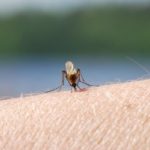In the wake of ongoing research on Zika virus and the imminence of the Olympic Games in Brazil, one of the epicenters of the mosquito-transmitted infection, we invite you to browse through some of our recent articles on this subject. Recent studies looked at how West Nile-transmitting mosquitoes may be able to spread Zika, a bacterium that has been found to block the spread of Zika, and the risk of Zika virus spreading locally in the U.S.
 West Nile virus-transmitting Culex mosquitoes may also carry Zika: New studies
West Nile virus-transmitting Culex mosquitoes may also carry Zika: New studies
West Nile virus-transmitting Culex mosquitoes may also be carrying Zika virus, according to new findings. The scientists in Brazil found Zika virus in Culex mosquitoes, which are known to transmit West Nile virus. The findings imply a larger problem of the local spread of Zika virus across the U.S.
Advertisement
Although Culex mosquitoes are not as aggressive, they are more widespread. In fact, they are already in the U.S. transmitting West Nile virus.
Lead scientists Constancia Ayres said, “It can transmit Zika. What we need to know now is which species is the most important — if Culex is the primary vector or the secondary vector.”
Matthew Aliota, researcher at the University of Wisconsin-Madison, added, “We need more research to see if it’s a competent vector. Just because you find virus in a Culex mosquito doesn’t mean the mosquito can transmit the virus. A mosquito might pick up a virus when feeding and that virus might replicate in the midgut but still might not disseminate to secondary tissues.”
Other research did not find Zika virus in different mosquito breeds. Continue reading…
 Benign bacteria block Zika virus spread in mosquitoes
Benign bacteria block Zika virus spread in mosquitoes
Zika virus 2016 update: Benign bacteria were found to completely block the transmission of Zika and Chikungunya in mosquitoes, and scientists developed a new model to examine the role of sex in Zika transmission.
The researchers at the University of Wisconsin-Madison found that the benign bacterium known as Wolbachia pipientis can be used to block the transmission of the virus in Aedes aegypti.
To date, 39 countries and territories in the Americas have been affected by the Zika epidemic. It is estimated that four million people will become infected by the end of the year. So far, Zika virus has been linked to birth and brain defects. There is currently no vaccine nor a cure for Zika virus, so prevention is the only method to protect oneself from contracting the infection.
Researchers have already begun releasing the mosquitoes with the Wolbachia bacterium in countries like Colombia, Brazil, Australia, Vietnam, and Indonesia as a means to control dengue virus.
Researcher Professor Scott O’Neil said, “In two of our initial study sites in Australia, approximately 90 percent of the mosquitoes continue to be infected with Wolbachia after initial release more than six years ago.”
Wolbachia can be found in 60 percent of insects, and although it is not common in Aedes aegypti, the researchers found the bacterium can be introduced to mosquitoes in the lab and thus help prevent dengue virus transmission.
For the study, the researchers infected mice with Zika virus, which was originally isolated from a human patient, and allowed mosquitoes to feed on the mice either two or three days after they were infected. The mosquitoes either were harboring a strain of Wolbachia known as wMel or were Wolbachia-free. Continue reading…
 Zika virus, Ebola spread predicted using climate change trends, study identifies 50 U.S. cities at risk
Zika virus, Ebola spread predicted using climate change trends, study identifies 50 U.S. cities at risk
Zika virus and Ebola virus spread can be predicted using climate change trends, according to research. The findings come from the University College London where researchers found that predicting zoonotic diseases may be possible through analyzing fluctuating global demographic and environmental patterns.
Zoonotic diseases are transmitted by animals and insects to humans. So far, Ebola and swine flu have been the largest outbreaks of zoonotic diseases.
Researchers proposed a model that makes use of climate change, human population density, land cover change, and human mobility to detect instances of epidemic around the world. The researchers noted that zoonotic diseases adhere to a consistent pattern over time. The researchers suggested, “Of the component drivers, climate change and human population
growth are predicted to have the largest effects by increasing landscape suitability for the host and human–host contact rates, while land-use change has only a weak impact on the number of future events.” Continue reading…
 Birth defect risk in Zika virus depends on the timing of infection during pregnancy
Birth defect risk in Zika virus depends on the timing of infection during pregnancy
Advertisement
Birth defects risk in Zika virus depends on the timing of infection during pregnancy, according to a new study. If Zika infection occurs during the first two trimesters of pregnancy, then the risk of Zika-related birth defects increases.
The researchers from the U.S. and Colombia looked at over 12,000 pregnancies in Colombian women. The study found that women did not have any infant abnormalities if they contracted Zika in the last three months of their pregnancy. On the other hand, 10 percent of the women in their last trimester had not given birth yet, so the research is still preliminary.
The researchers concluded that based on the data “maternal infection with the Zika virus during the third trimester of pregnancy is not linked to structural abnormalities in the fetus.” Continue reading…
